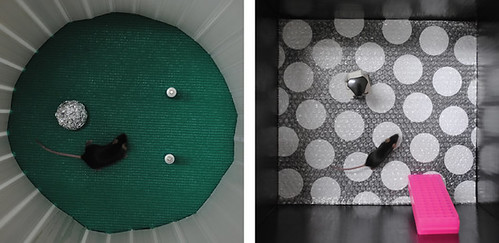A region of the hippocampus in the brain helps sense differences between existing memories and new experiences.
The hippocampus is an important region of the brain that encodes spatial memory. It consists of a number of subfields that have specialized functions in memory storage and retrieval, but the precise role of some of the subfields remains unclear. Thomas McHugh and colleagues from the Laboratory for Circuit and Behavioral Physiology at the RIKEN Brain Science Institute have now discovered that in mice, the CA2 subfield senses small changes in the environment that are at odds with their spatial memory.
McHugh and his colleagues sought to determine the role of each subfield of the hippocampus in sensing familiar and new environments through a series of mouse experiments, focusing on the often overlooked CA2 subfield. They first exposed mice to a familiar environment, and then moved them back to their home cage. The researchers then either put the mice back in the first location or moved them to a new location that the mice had never experienced.
The research team examined similarities and differences in the way hippocampal subfields responded to the two environments by a procedure known as catFISH—cellular compartment analysis of temporal activity by fluorescence in situ hybridization. This technique allows the timing of neuronal activity to be determined and permits the assessment of contextual memory by observing changes in response to environmental manipulations.

The researchers found that in most cases, there was more overlap in the response of hippocampal neurons in all subfields when the mice were replaced in the first location after their time in the home cage compared with placement in the new location. However, in mice with a mutation in the CA3 subfield that causes CA3 neuronal activity to be uncoupled from the animal’s sensory environment, the change in CA2 response to a novel environment did not appear. The finding suggests that the CA3 inputs to CA2 modulate the ability of CA2 to sense novel environments.
In a final experiment, the researchers introduced more subtle changes to the environments during the second placement by taking objects from one location to the other. A distinct change in CA2 neuronal activity was found during these exposure intervals as a response to more subtle changes to the animals’ environment. The CA2 subfield may therefore be the most sensitive to subtle differences between existing memories and new experiences. “In future studies, we plan to use genetic approaches to control CA2 activity in order to understand its direct effect on behavior,” says McHugh.
Contact: Thomas McHugh – RIKEN
Source: RIKEN press release
Image Source: The images is credited to M. E. Wintzer et al, and is adapted from the RIKEN press release.
Original Research: Abstract for “The hippocampal CA2 ensemble is sensitive to contextual change” by Wintzer, M. E., Boehringer, R., Polygalov, D. and McHugh, T. J. in Journal of Neuroscience. Published online February 19 2014 doi:10.1523/JNEUROSCI.2563-13.2014







